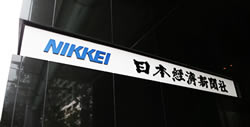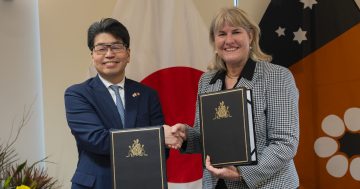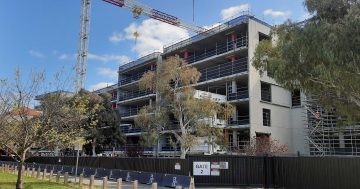Stirling Larkin* says Australian high net worth investors are taking the recent Nikkei exodus as an omen worth paying attention to.
 The defining distinction between successful ultra-high net worth (UHNW) wealth management and that of other investment communities is the often vastly higher prioritisation of redemption and preservation of capital over simple returns from invested capital.
The defining distinction between successful ultra-high net worth (UHNW) wealth management and that of other investment communities is the often vastly higher prioritisation of redemption and preservation of capital over simple returns from invested capital.
So it’s no surprise to Australian UHNW investors to learn that Japan’s bellwether Nikkei 225 stock index has, according to data from Japan Exchange Group, seen the largest annual year-to-date net selling by offshore investors since 1987’s “Black Monday”.
It must not be forgotten that Japan’s stock and property bubbles did not burst until 1992, meaning that this year’s net sell-offs have outweighed even those of the nadir on 19 August 1992, when the Nikkei 225 opened at 14,338 points.
The forced Japanese retreat from regional property investments led to the worst fixed-asset recessions on record in Queensland and New South Wales.
The reason the Nikkei drop is not a surprise to affluent Australian investors is they know there is a minimum delay in exiting Japanese stocks and the return of invested capital to offshore investors (a trait those in Russian, Venezuelan or Greek emerging markets would greatly envy).
This is thanks to Japanese-listed bourses’ well-earned reputation for redemption of listed investments and a liquid underlying hedged currency found in the yen.
Paradoxically, Japanese stock exchanges suffer higher sell-off volatility spikes because of this.
Hayden Matthews, head of private banking at HSBC Australia, says: “Whether investing directly in the Topix or the Nikkei 225, Japan has generally provided a variety of great stock opportunities for investors seeking direct access to one of the largest markets in the world.”
“Whilst many high net worth [HNW] investors are still expecting buybacks and earnings revisions upwards in Japan, HNW Australians are more judicious about these matters and are concerned with whether momentum has run its course.”
“Some are feeling a little more ‘risk-off’ and are investing more prudently.”
Australian UHNW investors are taking the recent Nikkei exodus as an omen worth paying attention to.
Negative sentiment
Importantly, the Bank of Japan — which had aimed to spend ¥6 trillion (A$76 billion) on Japanese stocks in the form of exchange-traded funds (ETFs) — has been slowing its purchases of ETFs this year.
Steps like this, say some commentators, are affecting sentiment alongside the President Trump–stoked volatility in the “hot seven” currencies basket: the Aussie dollar, Canadian “loonie”, the yen, greenback, Brexit-vexed sterling, the euro and China’s “Redback”.
But what adds concern to Australian UHNW investors is that while Nikkei 225 underperformance is not unheard of, in September 2018 there is equally ominous underperformance on the Topix and Mothers Japanese indices.
According to Goldman Sachs, Topix’s rangebound trading between 1,700 and 1,750 points is not unusual, but the reversal from late-June through mid-August was.
Topix, which famously relies on hedge fund momentum-factor trading, saw momentum sharply underperform, and quality “SMID” caps (called small to mid-caps in Australia) and stable growth baskets, which had seen strong share price performance, lagged.
Similar concerning underperformance was echoed across Tokyo’s Mothers index, which is bucking the trend experienced on the US’s Nasdaq index, which is enjoying halcyon days.
Australian UHNW investors assess all offshore equity exposures against those domestically on Australia’s ASX200 and this is significant given that in the post–Global Financial Crisis period, “one-off” expenses have represented an average of 34 per cent of S&P/ASX 200 “underlying profit”.
Most of these charges have related to fixed asset impairments and restructuring costs.
This has helped boost future profitability through a combination of lower operating expenses and reduced depreciation, depletion and amortisation.
For Australian affluent investors who recall the deep 1989–92 Queensland and NSW fixed-asset recessions — sparked by Japan’s rapid exit from Australian real estate markets — the possibility of another sudden Japanese market shake worries those who recognise that the S&P/ASX 200’s very large fixed asset impairments costs ratio could lead to real hurt to Australian investors again.
Irrespective of US President, Donald Trump’s Sino–US trade war concerns, Japan has been the graveyard of too many investment fortunes to become the likely main beneficiary of any rotation out of US assets.
Equally, underestimating or ignoring the girth of Japanese stock momentum has blindsided many more.
* Stirling Larkin is an AFR contributor and Chief Investment Officer of Australian Standfirst (www.australianstandfirst.com).
This article first appeared at www.afr.com.







